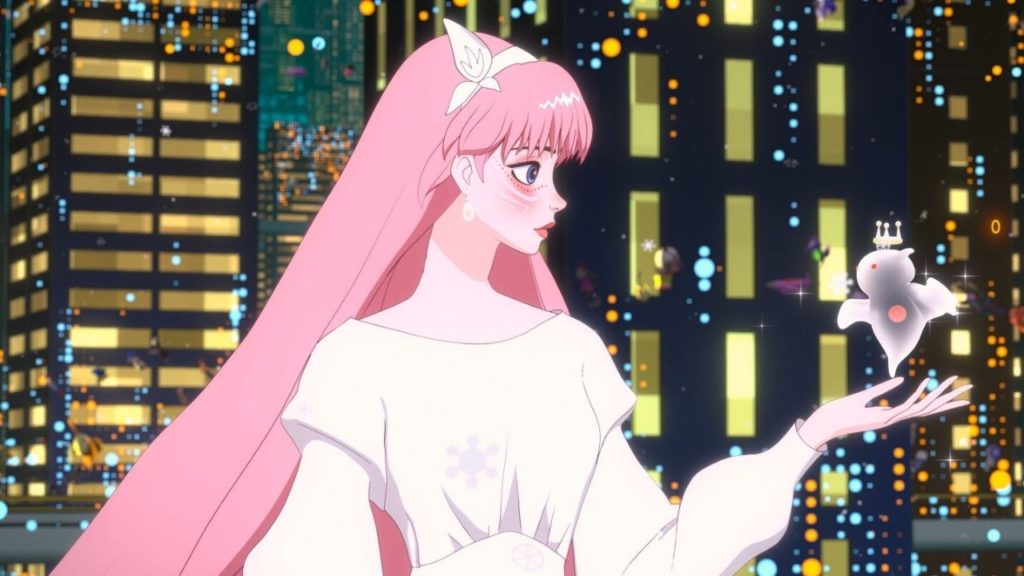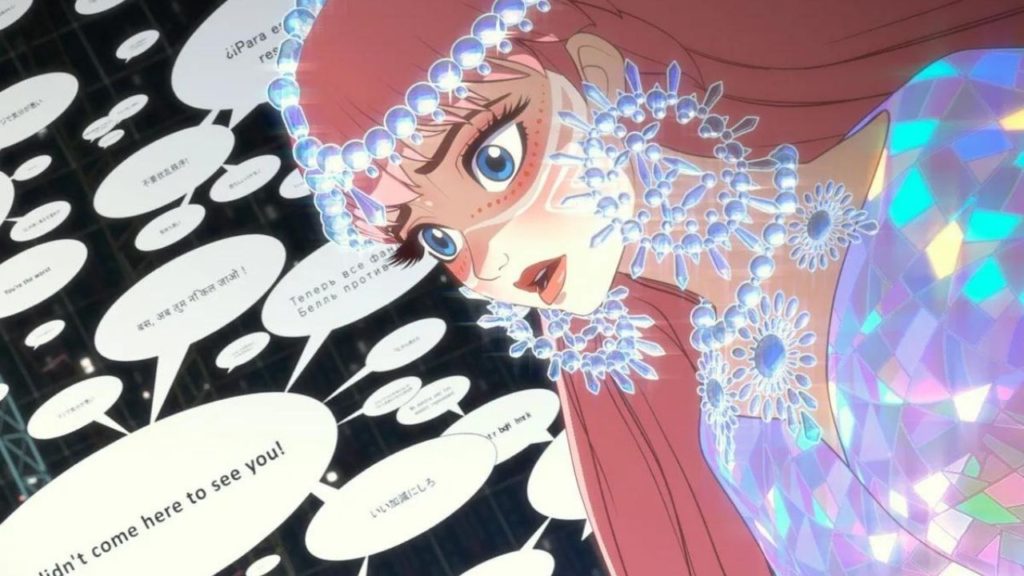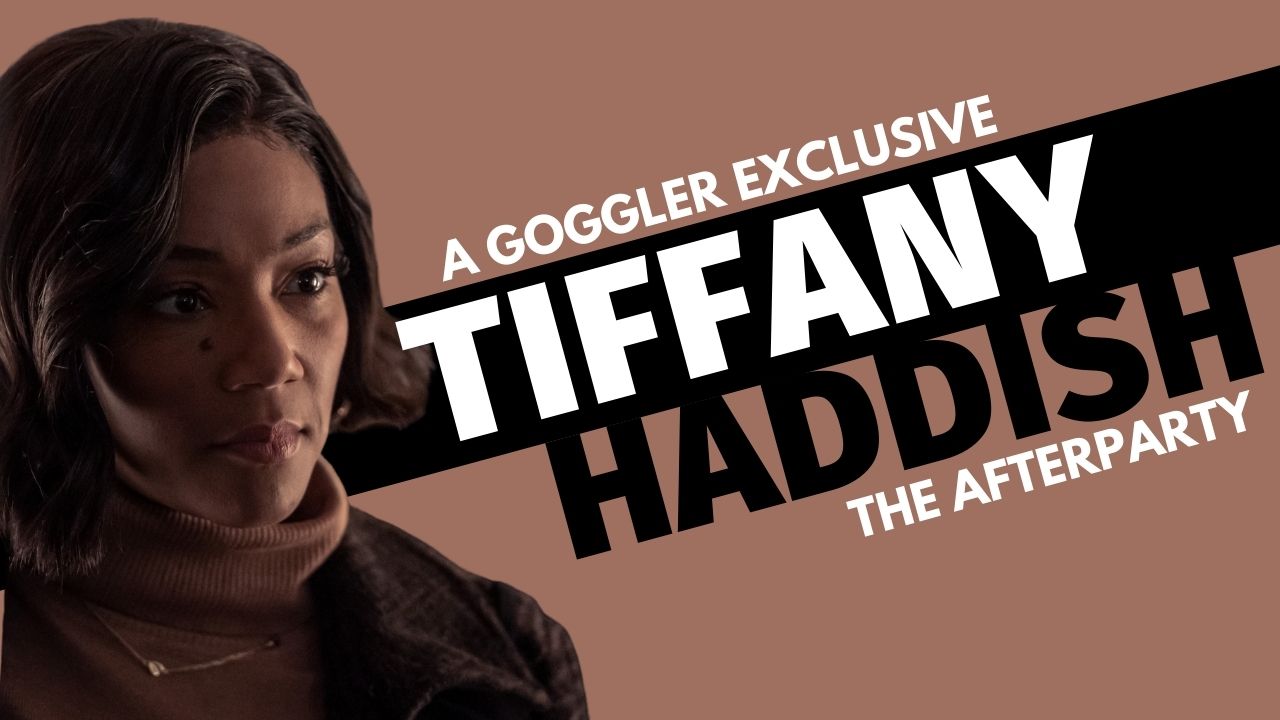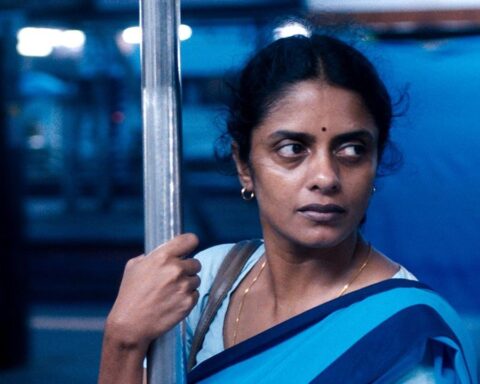Within the first 90 seconds of Belle, I was all in.
First, writer/director Mamoru Hosoda (Mirai) tells you everything you need to know about the digital world that he’s created for his story. It’s called “U.” It’s home to some 5 billion people, all of whom appear as avatars that are generated by a mobile app that biometrically syncs to the user, reflecting their innermost selves through an incredible algorithmic synthesis of the physical and the virtual. The app taps into every aspect of who they are, extracting all of their latent gifts, purest joys, and deepest insecurities, which it uses to create a digital manifestation.
A narrator is explaining all of this to us as we slowly fall into this gorgeous, sprawling metaverse, one with no beginning or end, no up or down, or left or right. It is vast and without structure. It bears no resemblance to any game or cyberspace you may have explored. It is entirely unconstrained.
By the time the first song kicks in – Millennium Parade’s “U,” with its driving drums and infernally catchy beat – we have already resigned ourselves to this world. We are hit with a sensory overload of shapes, and colors, and fantastical creatures great and small.
Just then, as we’re staring stunned and slack-jawed, Hosoda gives us what might be the most striking image in anime this year, as we are introduced to our protagonist, petals and confetti filling the screen, and Belle appears, cruising across the skyline on a massive blue whale that’s covered in speakers and subwoofers. It’s gorgeous. It’s insane. Even a little overwhelming.
Live as Another You

Suzu (Kaho Nakamura) is a mousy teenage wallflower who is crippled by sadness and self doubt. Following the tragic death of her mother, she finds herself trapped in a state of melancholy. She barely speaks to her father. She is meek and withdrawn. She is unable to find joy in the things she once used to. A talented singer and songwriter, she is no longer able to vocalize the music that is in her heart. At least not in the real world.
When her best friend Hiroka (Lilas Ikuta) encourages her to log into U, Suzu is immediately transformed into an impossibly dazzling, pink-haired pop diva called Belle. The app, which syncs with her biometrics, taps into her long suppressed musical talent and blows it up to power pop dimensions. She’s got the pathos of Taylor Swift, the poise of Beyoncé, and the pizzazz of Ariana Grande. Through Belle, Suzu finds a way to get back that voice that she lost to grief. Through U, she might even learn to see herself the way those around her already do.
It is through this newfound confidence that she decides to seek out and discover The Dragon (Takeru Satoh), an elusive U denizen deemed ungodly and terrifying by everyone else. Suzu is drawn to his pain and sadness. He is a mystery and she can’t help but get sucked into his orbit.
Her investigation, which takes place in both the virtual world and the real world, is the trope by which Mamoru Hosoda explores a variety of ideas. Belle is about dealing with grief and loss. It’s about escaping reality only to rediscover it. It’s about how we explore all the different sides of our personality. It’s about identity and self-discovery. It’s about how community can unlock our potential for greatness. It’s about the power of technology and the ability of music to reach our most darkest spaces. It’s about sacrificing ourselves for others.
She’s a Funny Girl That Belle

While Hosoda pays the obligatory tributes to Jacques Cocteau and Disney, he never strays from the kind of quirk that only anime allows. He trips into the surreal and the fantastic in search for emotional truths. He takes the scenic route into fairy tale whenever he needs a powerful metaphor. And all of it is built around a sweet, poignant, and frequently funny high school drama. One that seamlessly slips between the serious, the slapstick, and the sublime. There’s one scene in particular, in which two characters confess their love for each other, that somehow manages to be all three of those things.
Tale as Old as Time

Despite being loosely based on Jeanne-Marie Leprince de Beaumont’s Beauty and the Beast, Belle is neither a fantastical romance nor a didactic fairy tale. Instead, it borrows that story’s broader themes – of looking beyond appearances, of the value of kindness, of othering, of repressed trauma – and uses it to somehow find hope for humanity in the Internet.
There is an unapologetic sense of optimism in this movie. Mamoru Hosoda provides a vision of the future that is in stark contrast to the dystopias we’ve grown used to in so much contemporary fiction. For him, the Internet, social media, and the metaverse, are all forces for good. They are places where humanity can come together and show off their best selves, in spite of themselves. They are places were individuals and communities can explore, and create, and build.
Belle is a movie that is rooted in a buoyant confidence about the future. You know, the kind of feeling that you can’t help but buy into.









Follow Us